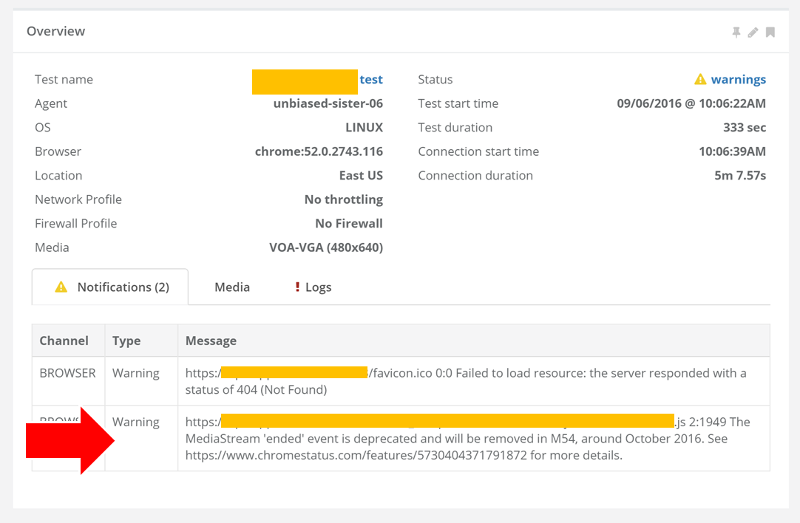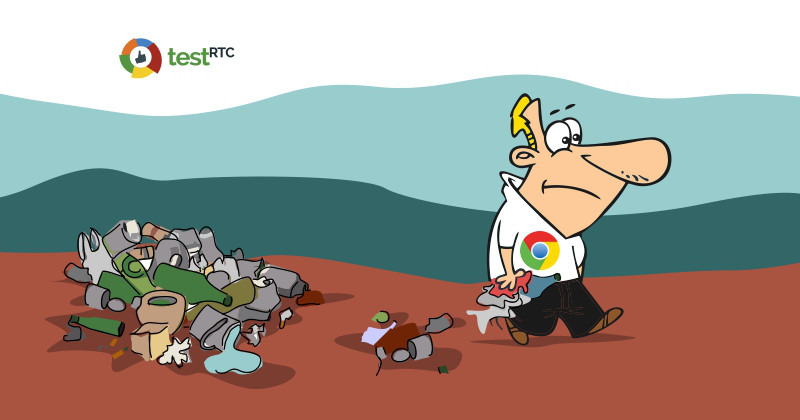I just had to share this one. You know how people complain about WebRTC breaking their services, and it being unstable?
It is partially true. What these people don’t tell you, is that oftentimes they just ignore all the warnings signs that are out there. In many of the cases, the service breaks simply because it wasn’t updated in time – and time was ample for it to be updated.
This “WebRTC deprecation” of feature and capabilities, as well as other browser features is a good thing – it is a way for the browser to get rid of excess junk (and vulnerabilities).
This week I worked with one of our customers, and bumped into this warning message that I just had to share:

What you see above is a screenshot of the types of reports we put out.
One of the things we decided early on was to collect the browser console logs and analyze them. If there’s anything suspicious there – we just bubble it up for our users.
One of the classic warnings for services that are in their staging phase is that they have no favicon for their website, which you can see in the first warning. The thing that was new to me was the second warning in there:
The MediaStream ‘ended’ event is deprecated and will be removed in M54, around October 2016.
You know what? Knowing that enables the tester to file a bug, and the developer to complain (and curse the tester) and then fix this issue. Hopefully before deprecation kicks in
The interesting thing is that whenever a new release of Chrome comes out, the number of deprecation warnings rise in all services we test, and after awhile, these things get fixed and cleaned.
So what’s the takeaway?
- When you build your releases calendar and the patches, make sure to take into account the time needed to fix deprecation issues related to WebRTC – since it isn’t yet a standardized RFC, expect browsers to modify their APIs between versions
- Make sure to look at your browser’s console logs and clean them up. And while at it, why not automate this part as well and just use testRTC for the purpose?

